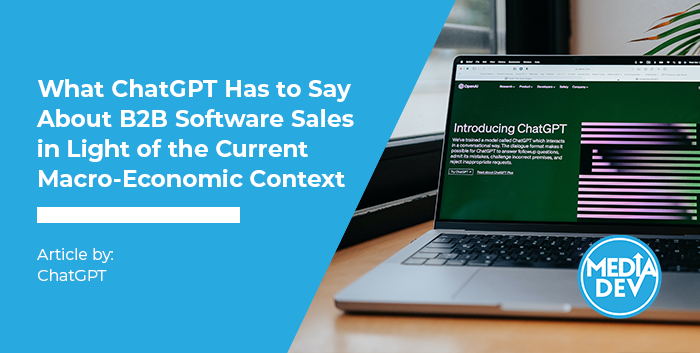But let’s face it: not everyone is good at selling remotely. In fact, some people prefer face-to-face contact in order to get deals signed. So how can you get better at selling remotely when it’s not your thing? Here are some tips to get you on the right track.
Know Your Buyer Personas
You cannot be good at sales if you don’t understand the challenges your prospects face and know how to position your solution to suit those exact needs. By doing research, conducting market intelligence, and understanding both your buyer personas and the accounts you are targeting before you reach out to engage them in a dialogue, you will get better at aligning potential pain points with your value proposition, thus improving your conversion ratio (lead to sale). Tailoring your pitches to each individual is important since no one likes copy-pasted, cookie–cutter messaging.
Build a Nurture Pipeline Through Social Selling
The first step to success in software sales is building a pipeline of prospects that you can nurture over time. One of the best ways to do that is by leveraging highly valuable content on LinkedIn through effective social selling. Make sure that you find new connections daily. You can do this by looking at the connections of your connections, or by using the search features on LinkedIn Sales Navigator. It is important that you spend time organically reaching out to net-new prospects each day in addition to re-engaging your existing network by sharing relevant content through your posts and InMail. If you want to get the best results, you need to make LinkedIn a habit and an integral part of your routine.
Stop Spamming
As mentioned above, no one likes feeling like they have been contacted by a robot. So many automated emails sound scripted, too salesy and like they were generated by a machine instead of a person. You cannot have a high reactivity rate if you are not taking the time to customize each message. Of course, this is more work than having a solution auto-generate your emails for you, but the outcome will be much more positive than a pure numbers and volume game (ie the more emails I spam, the more likely it is that someone will reply). I know there are a lot of new solutions out there claiming to tap into artificial intelligence or machine learning technology to generate messages that “sound human,” but many of them still miss their mark. Why? Because no tool can determine whether the company you are sending this message to is the right fit for your business or a waste of your time. No tool can do the leg work necessary to really customize each message to the individual based on their preferences. There are still some things that humans can do better than machines, and this is one of them.
Elaborate Win-Loss Analysis
Win-loss analysis is a great way to pinpoint what’s working and what’s not so as to improve your entire sales cycle from start to finish. The purpose of win-loss is to conduct exit surveys with prospects who have recently evaluated your solution to better understand their experience, whether they ended up purchasing your solution (a win), or not (a win for your competitor). It’s best to have a neutral third-party provider conduct such interviews since the sales rep cannot be objective if he or she feels criticized by a prospect. There is no room for defensiveness in win-loss, just getting a prospect’s feedback on their experience to understand where there is room for improvement, whether that be with the product features themselves, or with the sales rep (or something else). It’s important that such feedback be collated and analyzed in a scientific way in order to draw conclusions that will serve you to improve. This process helps “close the loop” of a lead generation initiative, and can be a great way to achieve higher marketing ROI.
Get Good at Giving Online Demos
Delivering a well-thought-out online product demo can make or break a sales deal. How you deliver the demo is one of the absolute key factors that decision-makers have highlighted as being important to them when evaluating software solutions — more so even than price. If by demonstrating the product the prospect is left confused or believes that your solution is complicated and difficult to use, they will walk away knowing that this is not the right choice for them. It is critical that a sales rep prepare each individual demo so that (like a sales pitch) it is tailored to the audience present. This is especially important when both functional and technical decision-makers are attending. While it is important to show the key product features of interest to your audience, don’t overdo it. A product demonstration should never last for 6 hours! (Believe it or not, I have heard that for some solutions this actually happens!!) Make your demo as interactive as possible and pay attention to details. An older audience will need a presentation with BIGGER font size and bolder text (trust me, as we all get older we start going blind), while a younger audience may not pay attention to such details.
Final Thoughts
I have always said that the difference between professional work and amateur work is in the details, and this is especially true for remote sales. Because you cannot interact face-to-face with your audience and it will take longer for your prospects to get to know you as a person, it is important that all exchanges be as professional as possible. Prompt and friendly replies to inbound inquiries or customer requests, making sure that your messages don’t contain spelling or grammar mistakes, being punctual, and never canceling online meetings when they are scheduled (especially not at the last minute), are all ways to ensure quality interactions with your prospects and clients alike. As much as selling software remotely can be considered as a constraint, it can also be viewed as an opportunity since it allows us to open up to a world of new possibilities (and markets beyond our borders) at the click of a button.







